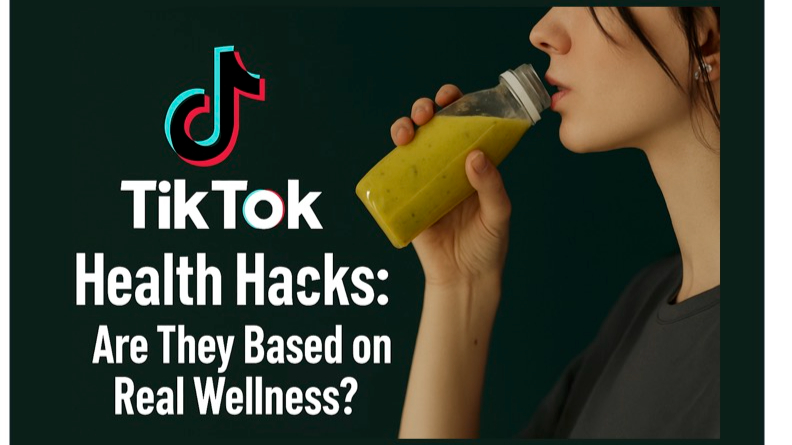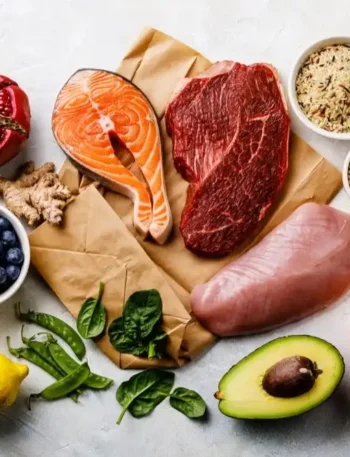
You scroll for five minutes, and boom—some 22-year-old with cheekbones like blades and a green juice the color of radioactive pond water is telling you maca root will “change your life.”
Next slide? A girl sobbing into her camera about seed cycling like it’s a breakup. Then, before your brain can catch up, you’re knee-deep in cortisol hacks, “cycle syncing,” and biohacks that sound half witchcraft, half Silicon Valley.
Welcome to WellnessTok—where hormone health is the main character, and the plot is equal parts chaos and revelation.
What’s wild isn’t just the content—it’s the effect. Quiet as it’s kept, TikTok isn’t just selling pretty smoothies and skin that glows like a glazed donut. It’s altering the way women understand, track, and intervene in their own hormonal rhythms.
Not with white coats and cold clinic lighting, but with personal anecdotes, DIY rituals, and viral rituals that are somehow both sacred and unhinged.
TikTok has done what decades of dusty health textbooks and sterile doctor visits failed to do—it made hormone health hot.
Now, instead of being dismissed with a casual “It’s just PMS,” women are building entire grocery lists, supplement stacks, and workout plans around their follicular phase. It’s a movement dressed in aesthetics but rooted in rebellion.
And no, it’s not all sunshine and adaptogens. There’s a dark side, too.
Let’s not pretend all of this is harmless girlie fun. Some of these trends walk a razor-thin line between empowerment and misinformation. One week, women are healing their PCOS symptoms with inositol and strength training.
The next? They’re skipping carbs entirely and chasing progesterone highs like it’s a street drug. TikTok didn’t just hand over hormone health—it opened Pandora’s pill cabinet.
You’ve got creators pushing raw carrot salads like they’re sacred scripture, swearing it’s the Holy Grail for estrogen dominance.
Meanwhile, hormone “experts” with no credentials other than a ring light and a Canva chart are giving out advice that could genuinely mess someone up.
And that’s the slippery part—when the algorithm decides your hormonal fate, what’s trending might just become what’s trusted.
Still, you can’t deny the seismic shift. Women, especially younger ones, aren’t waiting for a white-coated expert to validate their experience. They’re talking openly about breast tenderness, mood swings, libido crashes, and mid-cycle insomnia—and it’s not whispered behind locker room doors anymore.
It’s in 4K with captions, background music, and a three-part series. What used to be hush-hush is now pinned to the top of someone’s “Hormone Girl Era” playlist.
There’s something raw and revolutionary about that. We were raised in a world that taught us to normalize discomfort, to slap a smile on bloating and cramps, to swallow birth control like candy without asking a single damn question.
TikTok said, “Nah, sis. Ask everything. Post everything. Cry on camera, then post your hormone panel results.”
But it’s not just about ranting or aesthetic pantry tours. It’s shifting consumer behavior and clinical conversation. Sales of magnesium glycinate, cycle-specific workout guides, and hormone test kits are booming—not because some corporation ran a campaign, but because a creator with hormone acne showed her before-and-after.
That’s influence rooted in lived experience, not polished PR.
There’s a quote I keep coming back to: “When the system ignores you, you build your own.” That’s exactly what’s happening.
TikTok became a jungle gym for women who were sick of being dismissed, misdiagnosed, or left in the dark. And while yes, there’s definitely snake oil in the mix (and more than one product that belongs in the trash), there’s also raw truth, community, and damn good information—if you know how to sift through the glitter and BS.
So yeah, TikTok might be messy, loud, and unfiltered—but maybe that’s exactly what hormone health needed. Not a lecture. A revolution.
Because whether it’s flax seeds or false promises, the girls are listening. And for the first time in a long time, they’re calling the shots on their own damn cycles.









